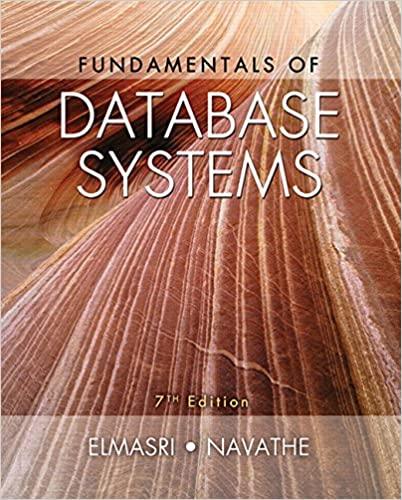Map the BANK ER schema of Exercise 3.23 (shown in Figure 3.21) into a relational schema. Specify
Question:
Map the BANK ER schema of Exercise 3.23 (shown in Figure 3.21) into a relational schema. Specify all primary keys and foreign keys. Repeat for the AIRLINE schema (Figure 3.20) of Exercise 3.19 and for the other schemas for Exercises 3.16 through 3.24.
Exercise 3.23
Consider the ER diagram shown in Figure 3.22 for part of a BANK database. Each bank can have multiple branches, and each branch can have multiple
accounts and loans.
a. List the strong (nonweak) entity types in the ER diagram.
b. Is there a weak entity type? If so, give its name, partial key, and identifying relationship.
c. What constraints do the partial key and the identifying relationship of the weak entity type specify in this diagram?
d. List the names of all relationship types, and specify the (min, max) constraint on each participation of an entity type in a relationship type. Justify your choices.
Figure 3.22
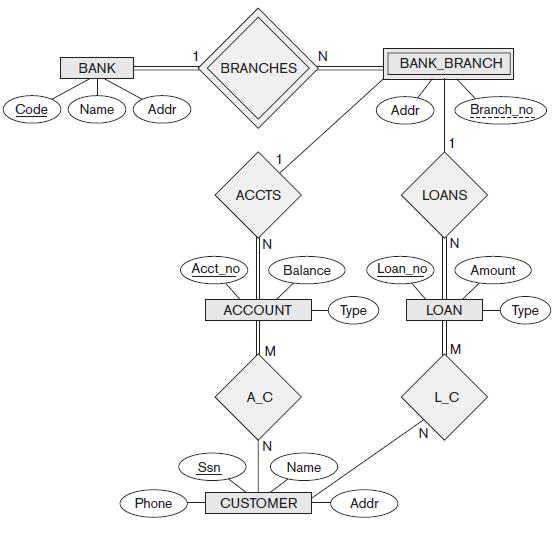
Figure 3.21
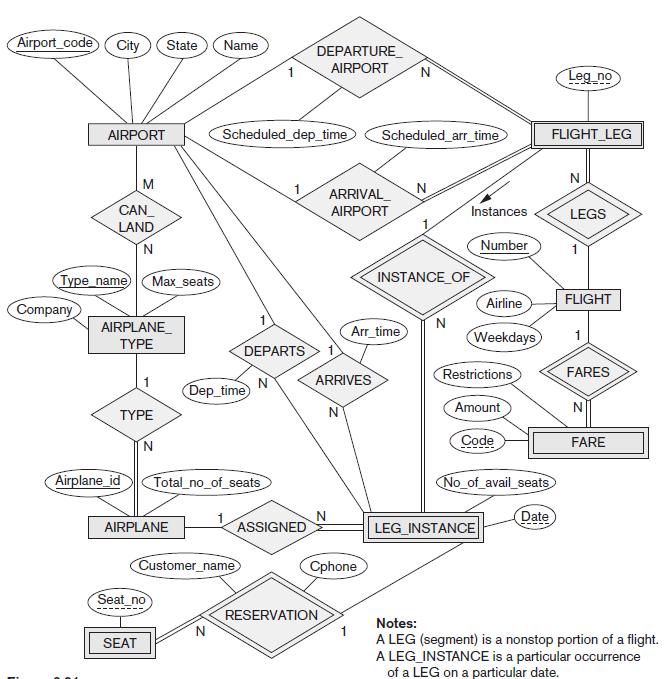
Figure 3.20
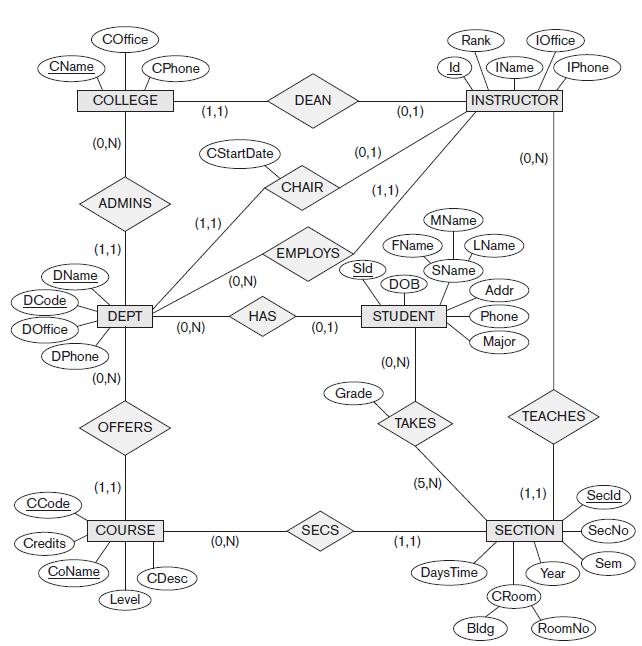
Exercise 3.19
Consider the ER diagram in Figure 3.21, which shows a simplified schema for an airline reservations system. Extract from the ER diagram the requirements and constraints that produced this schema. Try to be as precise as possible in your requirements and constraints specification.
Figure 3.21
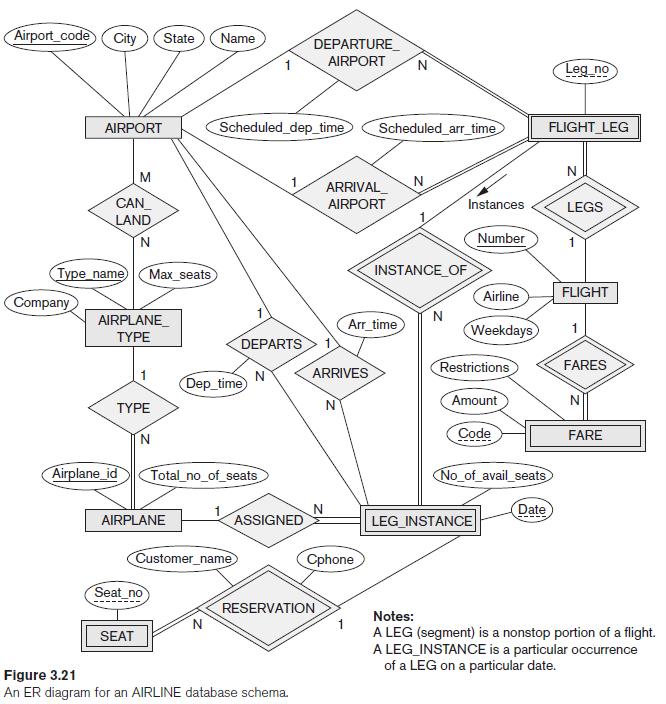
Exercises 3.16
Which combinations of attributes have to be unique for each individual SECTION entity in the UNIVERSITY database shown in Figure 3.20 to enforce each of the following miniworld constraints:
a. During a particular semester and year, only one section can use a particular classroom at a particular DaysTime value.
b. During a particular semester and year, an instructor can teach only one section at a particular DaysTime value.
c. During a particular semester and year, the section numbers for sections offered for the same course must all be different.
Can you think of any other similar constraints?
Figure 3.20
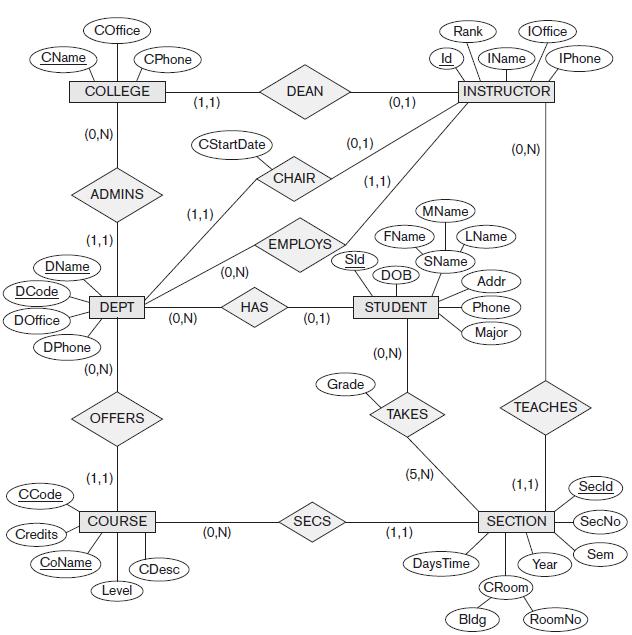
Exercises 3.24
Consider the ER diagram in Figure 3.23. Assume that an employee may work in up to two departments or may not be assigned to any department. Assume that each department must have one and may have up to three phone numbers. Supply (min, max) constraints on this diagram. State clearly any additional assumptions you make. Under what conditions would the relationship HAS_PHONE be redundant in this example?
Figure 3.23

Step by Step Answer:

Fundamentals Of Database Systems
ISBN: 9780133970777
7th Edition
Authors: Ramez Elmasri, Shamkant Navathe




